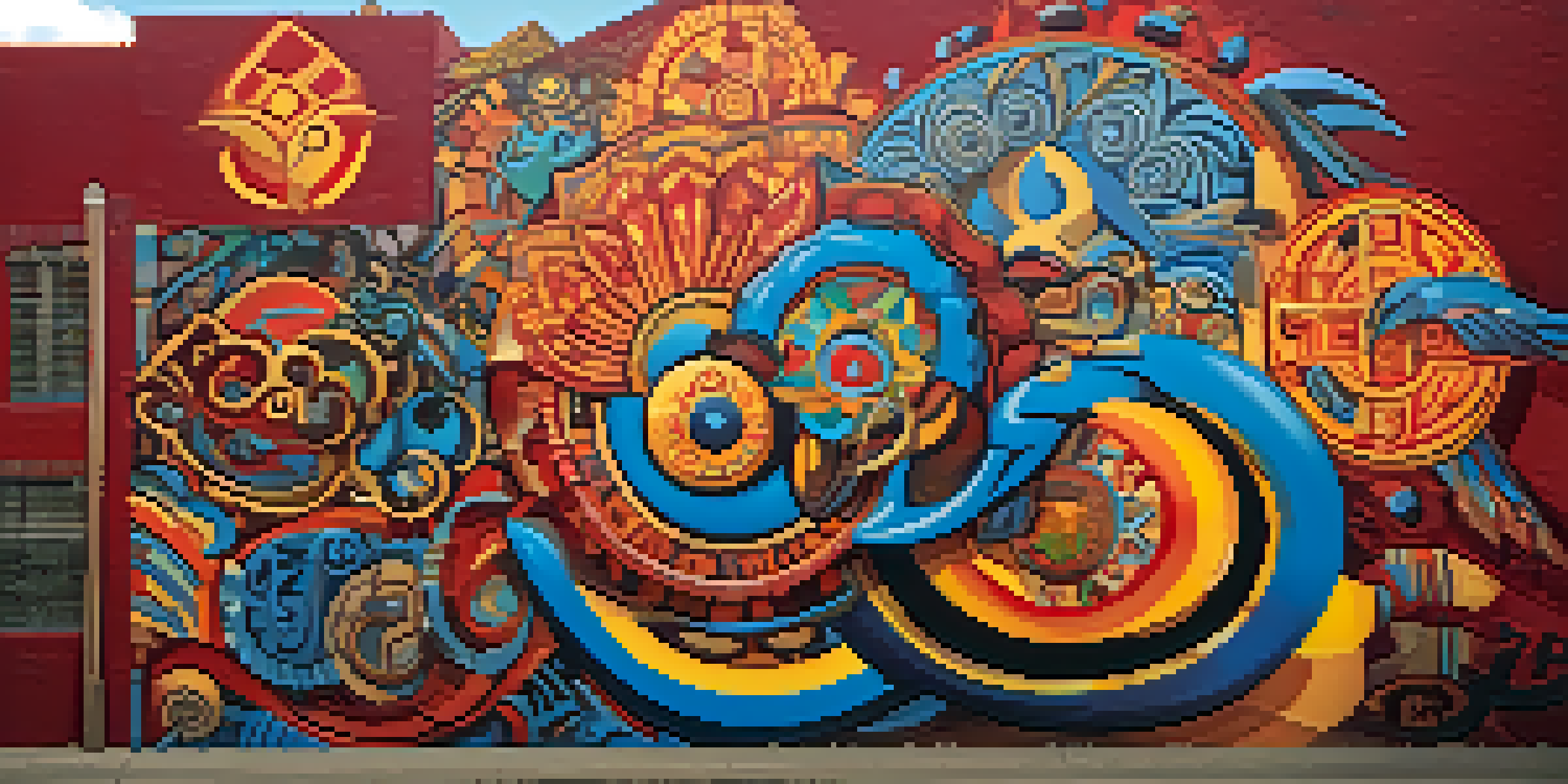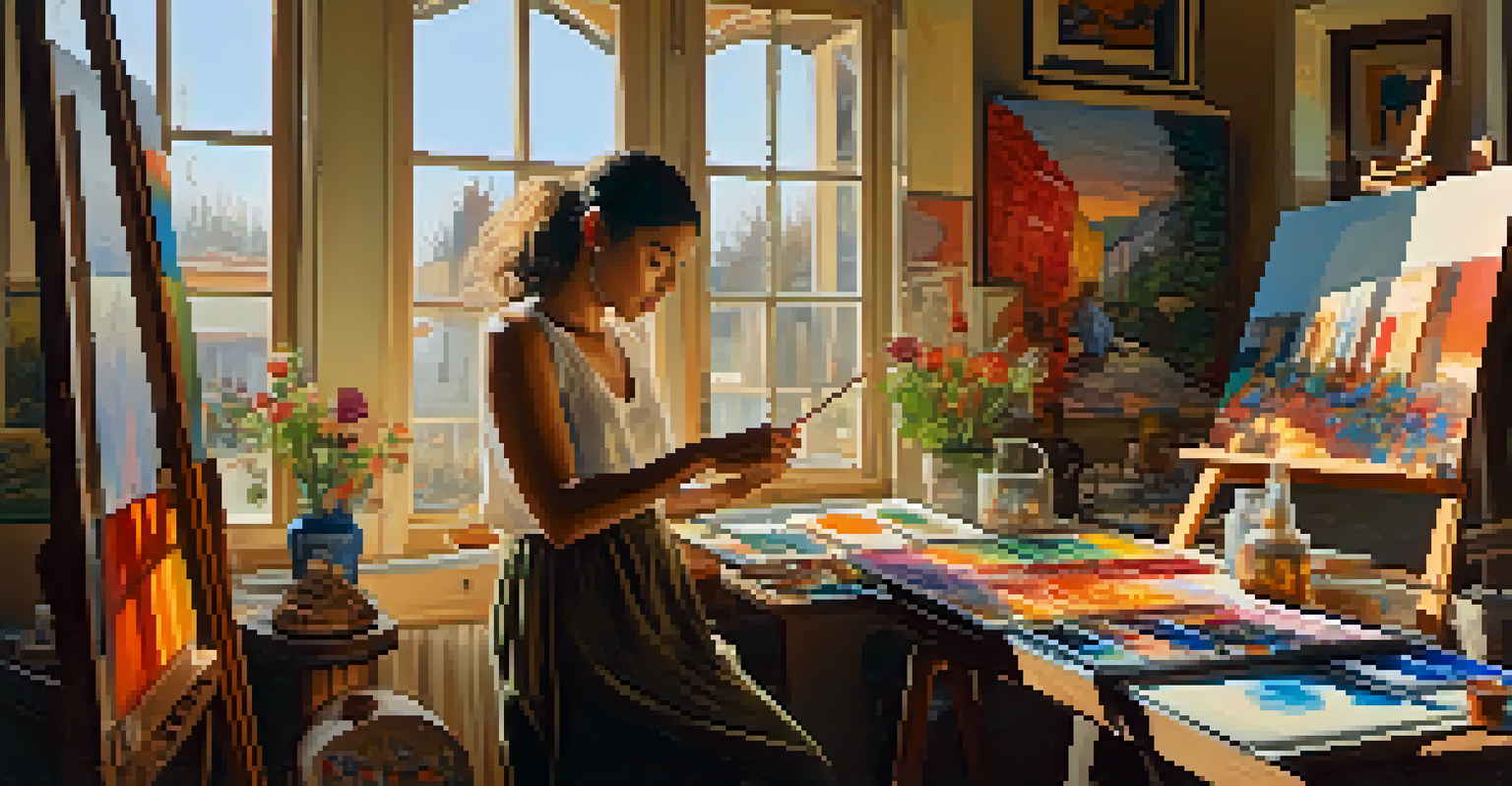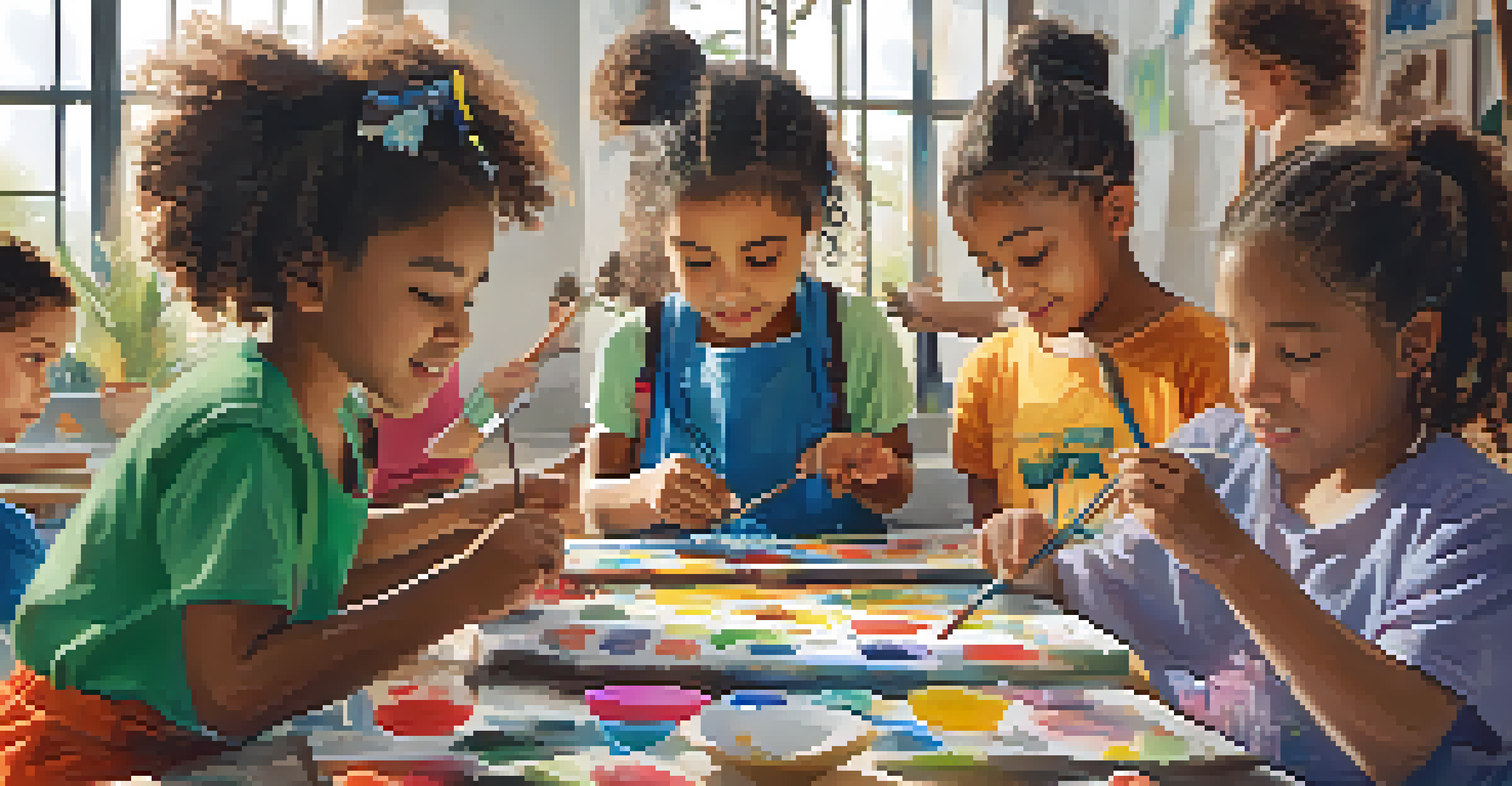Cultural Heritage: Using Art to Resist Colonial Narratives

Understanding Cultural Heritage and Its Importance
Cultural heritage encompasses the traditions, languages, and artifacts that define a community's identity. It serves as a living record of collective memories, reflecting both challenges and triumphs. Recognizing its importance is crucial, especially in a world where globalization often threatens local customs and narratives.
Art is not a mirror held up to reality but a hammer with which to shape it.
By valuing cultural heritage, communities can reclaim their stories and assert their identities in the face of outside influences. This reclamation is vital for fostering a sense of belonging and continuity. It allows individuals to connect with their roots and appreciate the richness of their cultural backgrounds.
Moreover, understanding cultural heritage can empower communities to resist colonial narratives that seek to erase or diminish their histories. This resistance can take many forms, including artistic expressions that challenge dominant narratives and celebrate indigenous perspectives.
The Role of Art in Cultural Resistance
Art has always been a powerful medium for expressing dissent and challenging oppressive narratives. Through various forms such as painting, sculpture, and performance, artists can convey messages that resonate deeply within their communities. Art becomes a voice for those who have been marginalized or silenced throughout history.

For example, murals and street art often reflect social and political issues, serving as a canvas for community voices. These artworks can reclaim public spaces and tell stories that counter colonial perspectives. They invite conversations about identity, history, and the ongoing impact of colonialism.
Cultural Heritage Empowers Communities
Valuing cultural heritage allows communities to reclaim their identities and assert their narratives against external influences.
Additionally, art can foster solidarity among communities facing similar struggles. By sharing their experiences and stories through creative expression, artists can build connections that transcend geographical and cultural boundaries. This collaborative spirit is essential in resisting colonial narratives and promoting cultural heritage.
Examples of Art as Resistance Against Colonial Narratives
Throughout history, numerous artists have employed their craft to resist colonial narratives. Take the works of indigenous artists, for instance, who often incorporate traditional techniques and symbols to reclaim their cultural identities. Their art not only challenges stereotypes but also educates audiences about their rich histories.
Preservation of one's own culture does not require contempt or disrespect for other cultures.
One notable example is the work of contemporary Aboriginal artists in Australia, who blend traditional storytelling with modern artistic practices. Through their art, they challenge the dominant colonial narratives and highlight the ongoing effects of colonization on their communities. This fusion of old and new creates a powerful platform for dialogue and understanding.
Similarly, Latin American artists have used their mediums to address themes of colonization and cultural identity. Their works often reflect the complexities of post-colonial societies, illustrating the struggles and resilience of marginalized communities. By sharing these narratives, they invite viewers to rethink historical perspectives and engage with the present.
The Impact of Digital Media on Cultural Heritage
In today's digital age, social media and online platforms have revolutionized how art can be shared and experienced. Artists can now reach global audiences, amplifying their messages and cultural narratives beyond local boundaries. This digital landscape provides new opportunities for communities to engage with their cultural heritage and resist colonial narratives.
Moreover, digital media allows for the preservation and documentation of cultural practices that might otherwise be lost. Through video, photography, and virtual exhibitions, communities can showcase their traditions and stories in innovative ways. This preservation is crucial in combating attempts to erase or rewrite history.
Art as a Medium of Resistance
Artists use various forms of art to challenge colonial narratives and give voice to marginalized communities.
However, it's essential to approach digital representation thoughtfully. While it can empower, there is also a risk of cultural appropriation or misrepresentation. Communities must navigate these challenges carefully, ensuring that their narratives remain authentic and true to their experiences.
Education as a Tool for Cultural Reclamation
Education plays a vital role in cultural reclamation, offering a platform for communities to share their histories and narratives. By integrating indigenous perspectives and cultural heritage into educational curricula, schools can foster a greater understanding of diverse histories. This approach not only benefits students but also strengthens community ties.
Art education, in particular, can empower young artists to explore their identities and express their experiences creatively. Workshops and programs that focus on traditional and contemporary art forms encourage self-expression and cultural pride. This empowerment can cultivate future generations of artists who continue to challenge colonial narratives.
Furthermore, collaborative projects between schools and local artists can bridge gaps between generations. By working together, communities can preserve their heritage while also innovating new forms of expression. This synergy enriches the cultural landscape and reinforces the importance of cultural heritage.
Challenges Faced by Artists in Cultural Resistance
Despite the power of art as a tool for cultural resistance, artists often face significant challenges. One major hurdle is the lack of funding and support for projects that focus on marginalized narratives. Without financial backing, many artists struggle to bring their visions to life and share their stories with a broader audience.
Additionally, artists may encounter censorship or pushback from those who feel threatened by their work. Challenging colonial narratives can provoke strong reactions, leading to conflict and even persecution. This reality can deter artists from expressing themselves fully, limiting the impact of their messages.
Digital Media Preserves Heritage
Digital platforms enable the preservation and sharing of cultural practices, allowing communities to engage with their heritage globally.
Nevertheless, many artists continue to persevere, finding innovative ways to navigate these obstacles. By forming collectives and seeking alternative funding sources, they create spaces for their voices to be heard. This resilience is a testament to the transformative power of art and its ability to inspire change.
The Future of Cultural Heritage and Artistic Expression
As we look to the future, the intersection of cultural heritage and art will continue to evolve. New technologies and platforms will provide fresh opportunities for artists to express their narratives and connect with global audiences. This evolution is crucial for keeping cultural heritage alive and relevant in an ever-changing world.
Moreover, as awareness of social justice issues grows, more artists are likely to engage with themes of colonialism and cultural resistance. This engagement can lead to richer dialogues and a deeper understanding of diverse experiences. By embracing these conversations, society can foster a more inclusive narrative that honors all cultural heritages.

Ultimately, the future of cultural heritage lies in collaboration and mutual respect. By supporting artists and communities in their efforts to reclaim their narratives, we can build a more equitable world. Art will remain a vital force in this journey, helping to resist colonial narratives and celebrate the richness of human diversity.